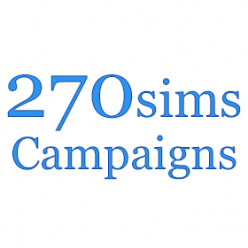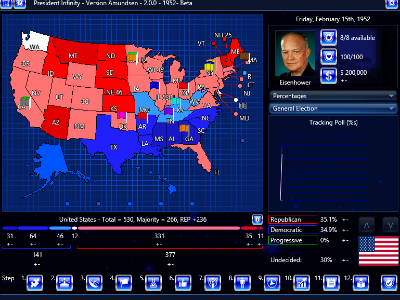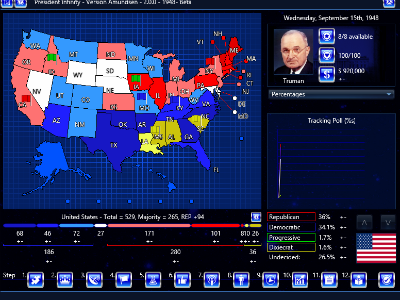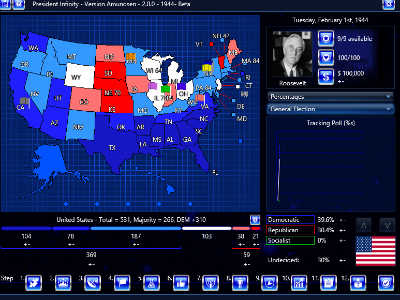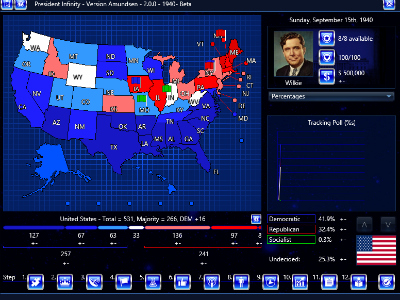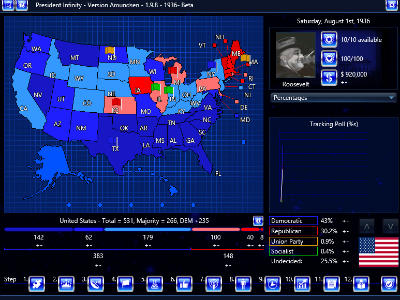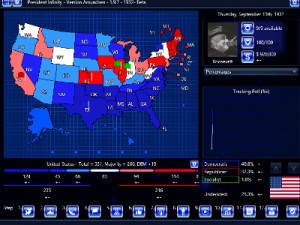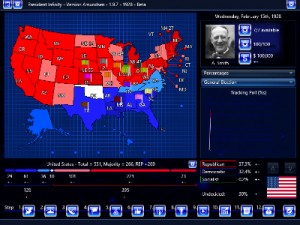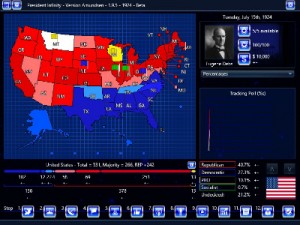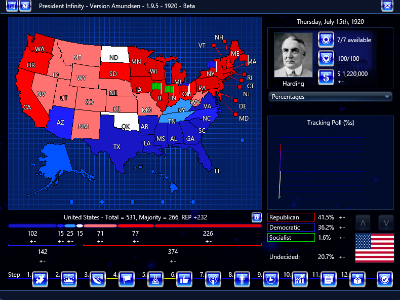Version 2.0 (w/ events added by Davis Os)
*This scenario has been greatly updated by the Historical Scenario Commission on October 8, 2017 and it can be downloaded here: United States – 1952 v.2.0
America is in the midst of a Cold War with the Soviet Union abroad, and in the middle of the Red Scare domestically. Which party can promise the greatest defense against the fear of Communism?
The Republicans have not won a presidential election in 24 years. The Republican moderate Eastern establishment, including two-time nominee Thomas Dewey, have decided to endorse World War II hero, Dwight D. Eisenhower, as he promises to be the best bet to bring the Republicans back to the White House. However, the aging Robert Taft realizes this is his last chance to win the White House for his conservative wing. Harold Stassen once again hopes to be the liberal option; however, he will have to share influence with Earl Warren. General Douglas MacArthur is also running; however, unofficially.
The Democratic party is collapsing around the unpopular incumbent president Harry S Truman. He would eventually refuse a 3rd term, allowing for a fresh face. The front runner is the populist and liberal Southern senator from Tennessee Estes Kefauver. However, some view him slightly too radical for 1952. Two moderate options exist in Adlai Stevenson (a reluctant candidate) and Averell Harriman (who is inexperienced). The conservative Southern option is Richard Russell. Truman’s VP, Alben Barkley, hopes to be a moderate Southern compromise choice. Several favorite son candidate try to hold their state’s delegates.
The Progressive Party is the largest 3rd party led by lawyer Vincent Hallinan and his running mate, Charlotta Bass, the first African-American VP nominee.
This election has many what-if scenarios:
- What if Thomas Dewey, the 1944 and 1948 nominee ran for the Republican ticket again?
- What if anti-Communist Red Scare monger, Joseph McCarthy, ran for the presidency at the height of his influence?
- Liberal Wayne Morse, Moderate Henry Cabot Lodge and Conservative Everett Dirksen and John W. Bricker were other Republican candidates with support that chose not to run. What if they Ran?
- What if President Truman decided to run for a 3rd term?
- What if Harry F. Byrd attempted to be the Southern option once again for the Democrats?
- Can George C. Marshall be the war hero option for the Democrats?
- FDR, Jr. had some backers pushing him to run to revitalize the party. What if he had agreed despite his inexperience.
- What if billionaire Joseph P. Kennedy pushed his son, Rep. John F. Kennedy to run in 1952 in his first year of eligibility. Can a 35 year old U.S. Rep win the nomination and the White House? He would have been the strong anti-Communist option for the Democrats.
- Eleanor Roosevelt (added by Davis Os)
Feedback, along with any suggestions to remedy any problems, is desired.
